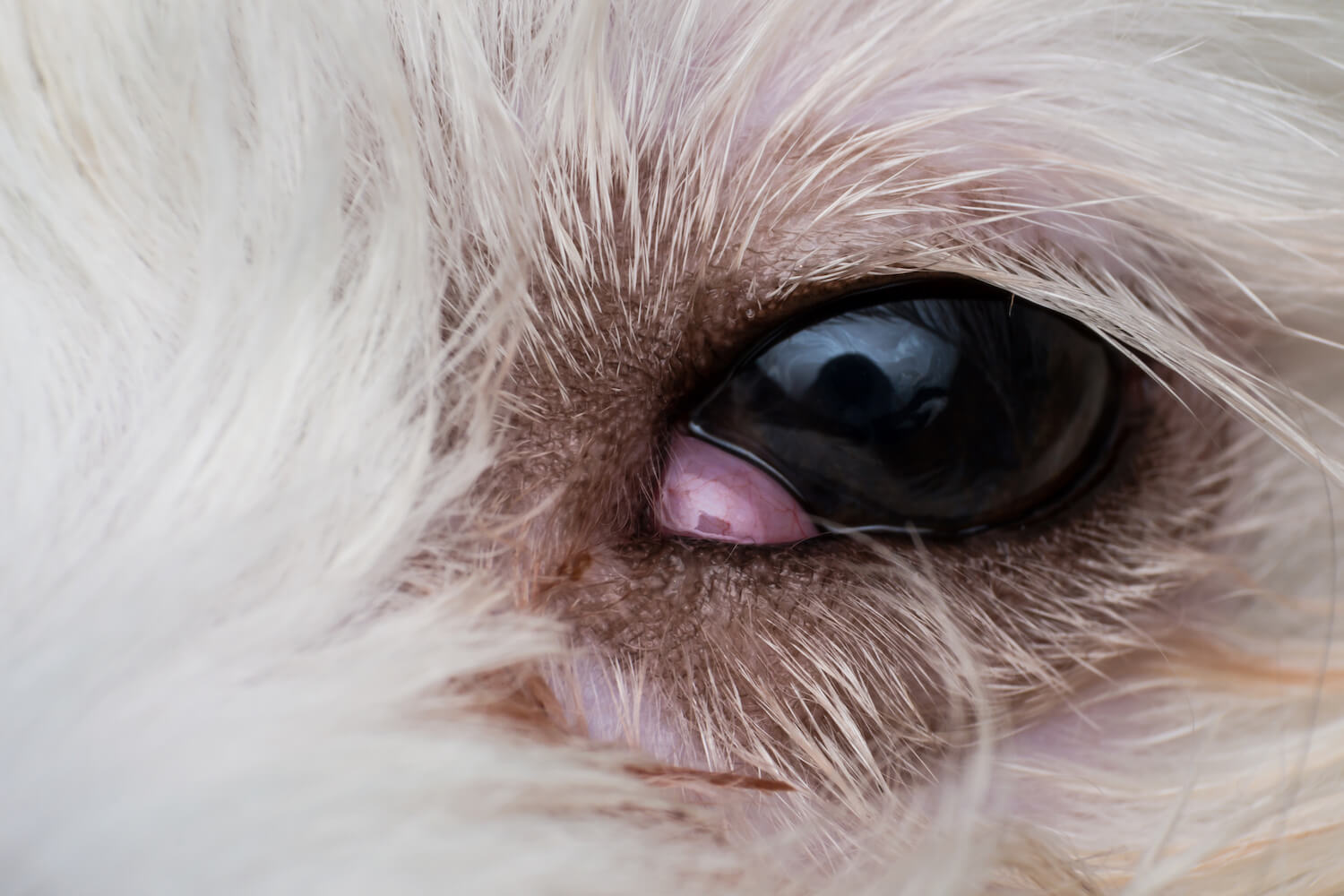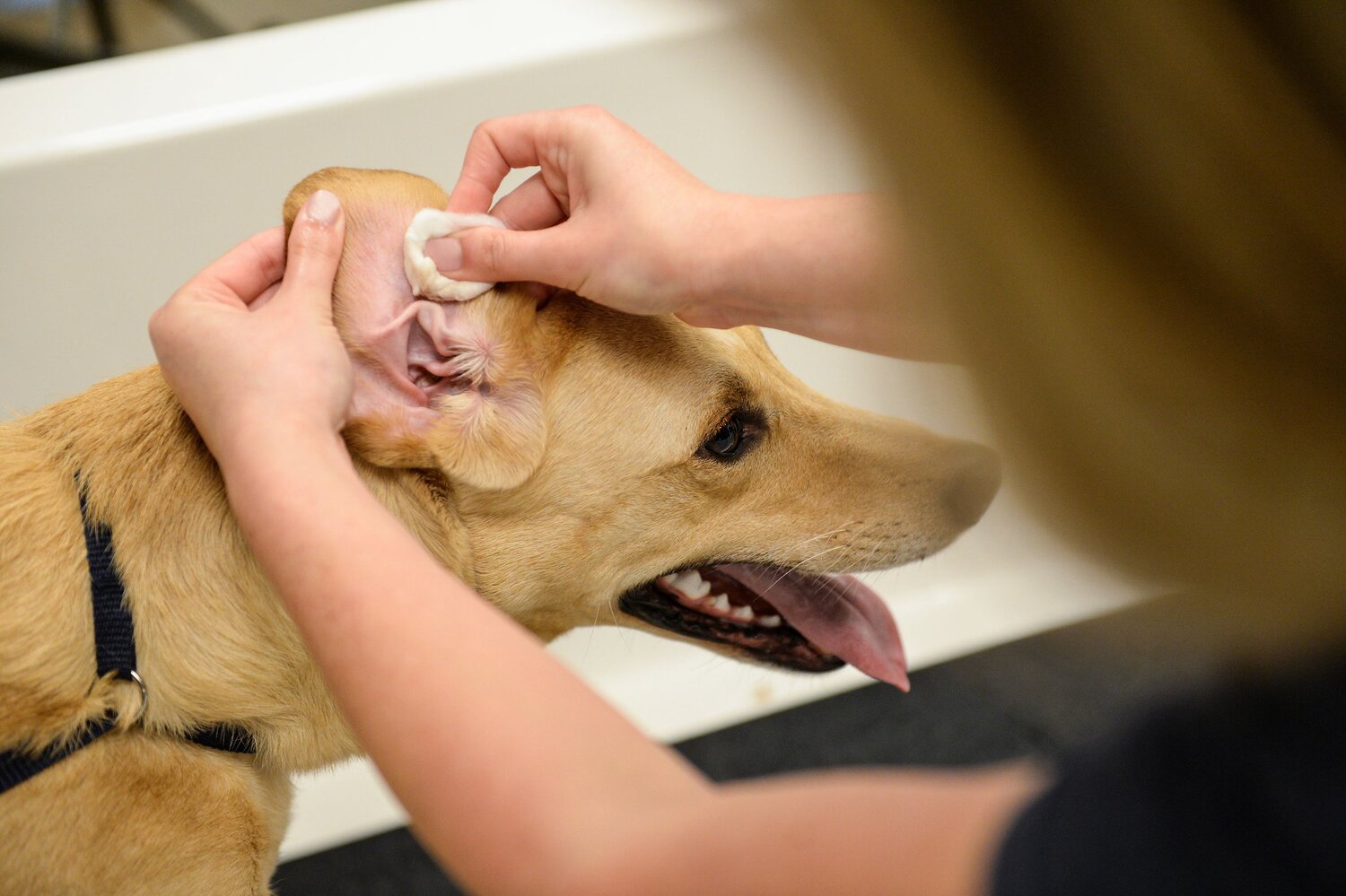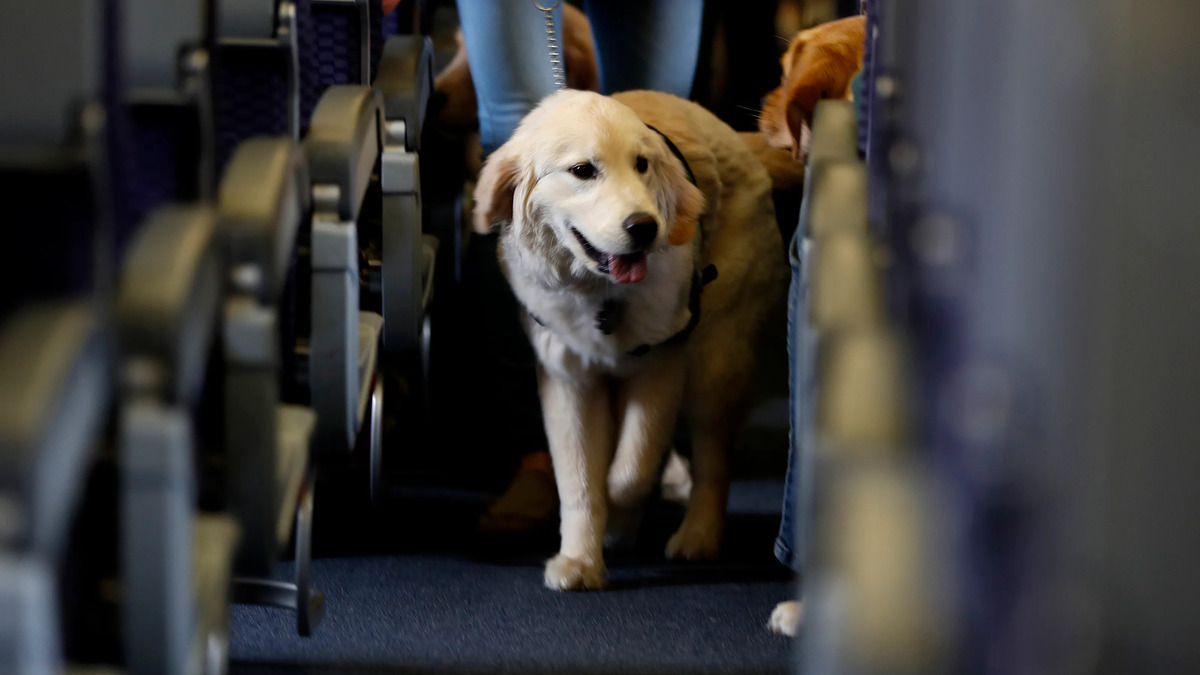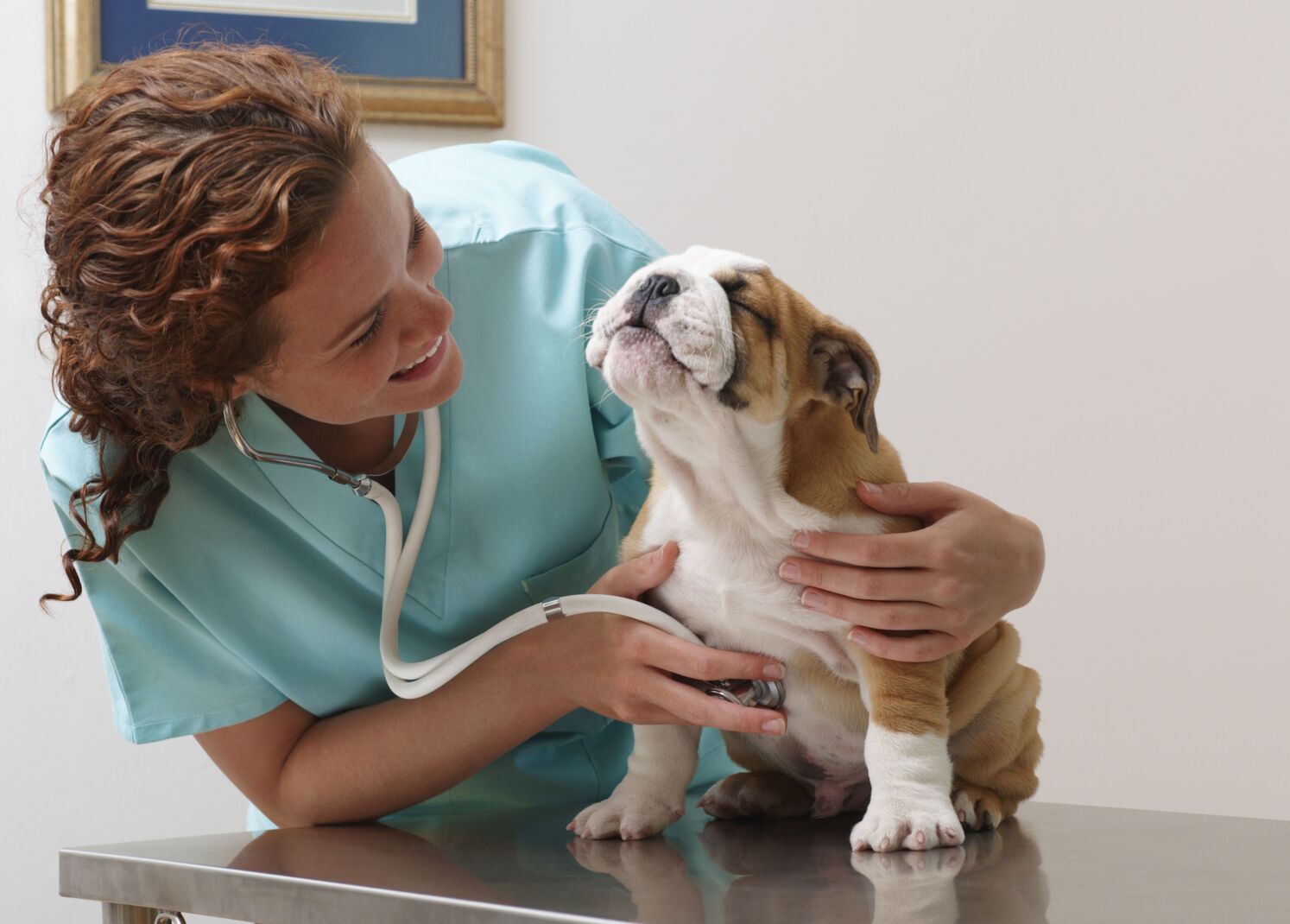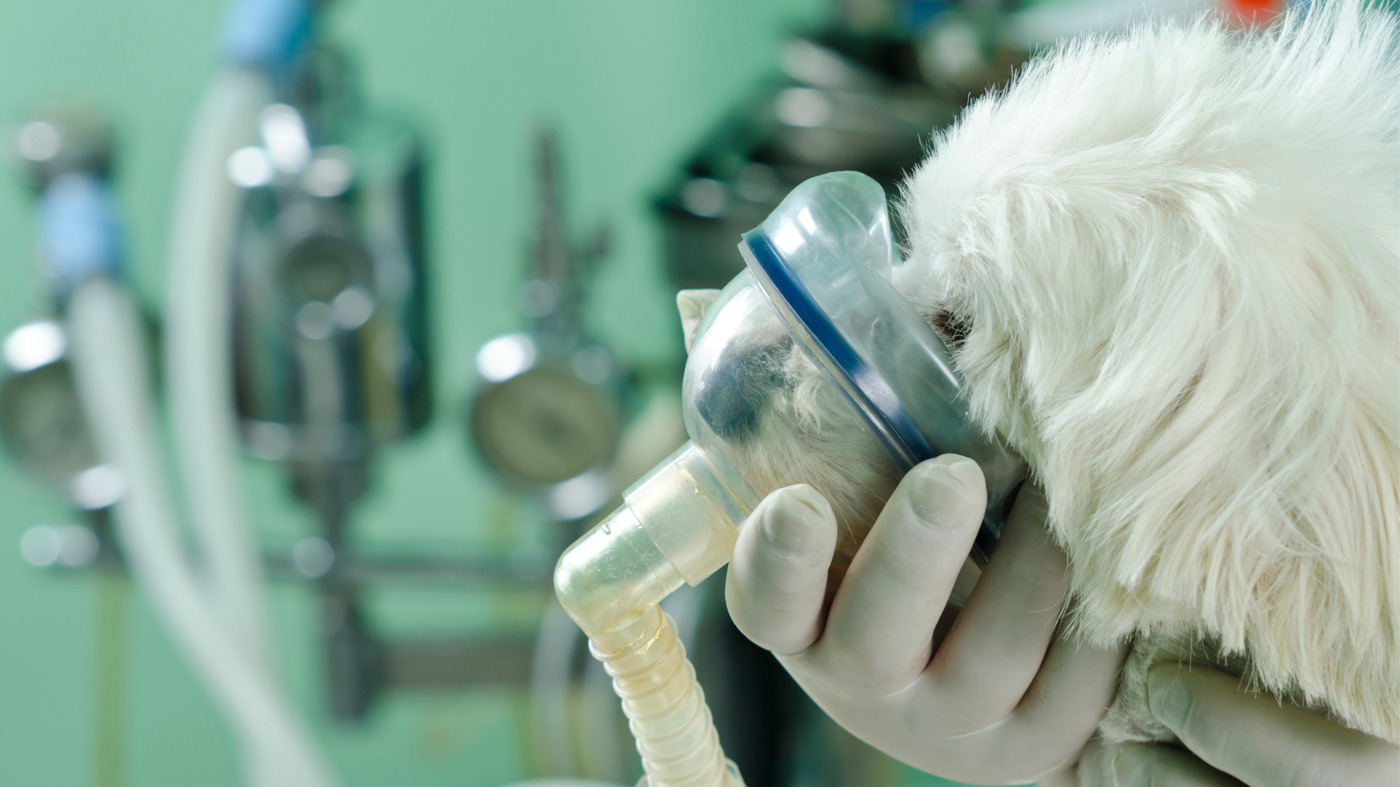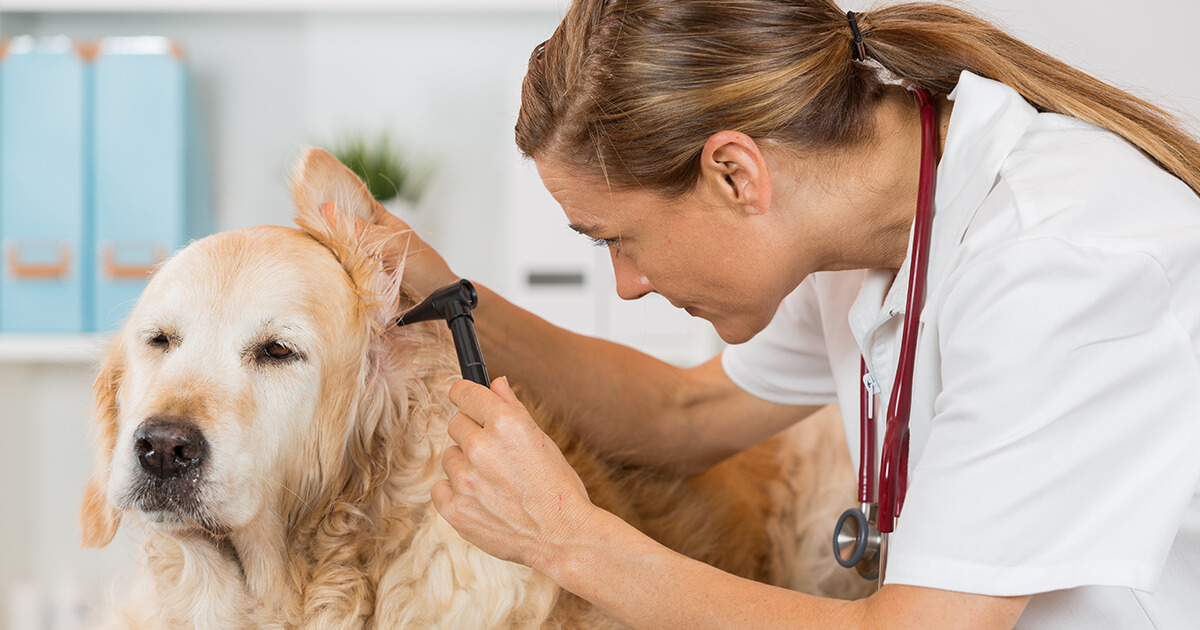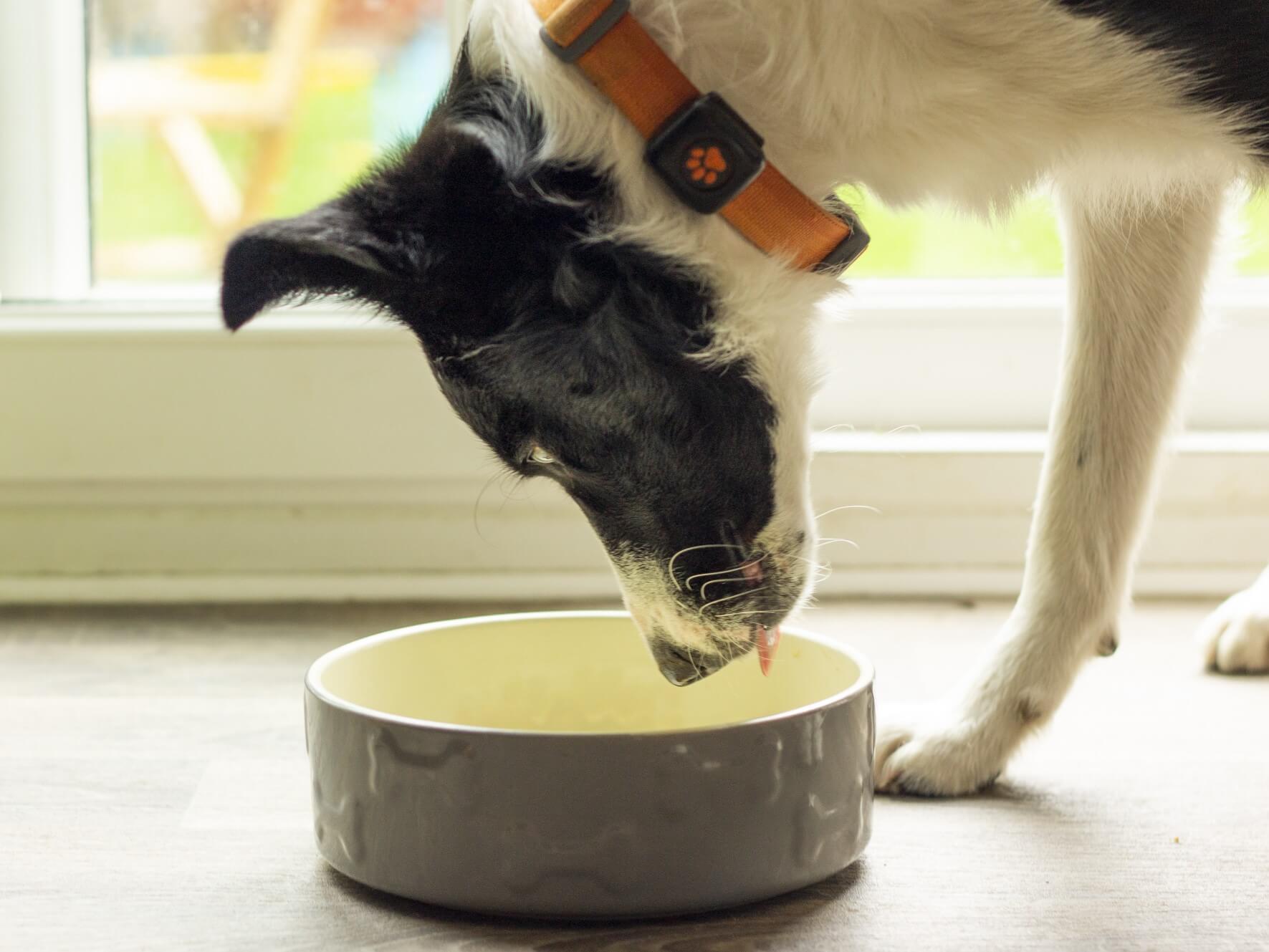Home>Health & Wellness>Common Health Issues>Respiratory Health>What Do You Do About An Upper Respiratory Infection In Dogs
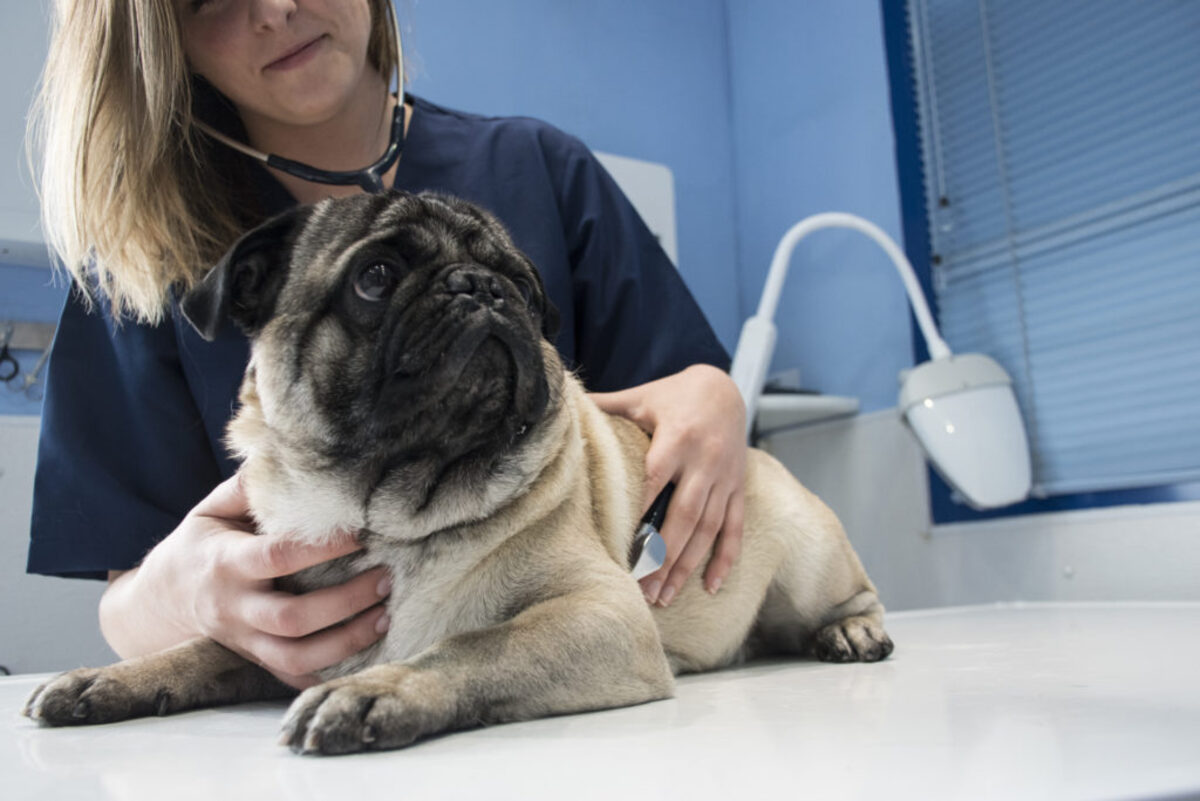

Respiratory Health
What Do You Do About An Upper Respiratory Infection In Dogs
Published: February 1, 2024
Learn how to manage an upper respiratory infection in dogs and improve their respiratory health with effective tips and treatments.
(Many of the links in this article redirect to a specific reviewed product. Your purchase of these products through affiliate links helps to generate commission for Pawsomeoldies.com, at no extra cost. Learn more)
Table of Contents
Introduction
Upper respiratory infections in dogs can be a cause of concern for pet owners, as they can lead to discomfort and health complications for our furry companions. These infections, often referred to as the common cold in dogs, affect the nasal passages, throat, and other areas of the upper respiratory system. Just like in humans, these infections can be caused by a variety of viruses and bacteria, making them a common health issue in dogs of all breeds and ages.
Understanding the nature of upper respiratory infections in dogs is crucial for pet owners to recognize the signs and symptoms, seek appropriate treatment, and provide necessary care for their beloved pets. By gaining insight into the causes, symptoms, treatment options, and preventive measures, dog owners can take proactive steps to safeguard their pets' respiratory health.
In this comprehensive guide, we will delve into the intricacies of upper respiratory infections in dogs, shedding light on the signs and symptoms to watch out for, the potential causes of these infections, effective treatment options, home care techniques, and preventive measures. By equipping yourself with this knowledge, you can become a vigilant and responsible pet owner, ensuring the well-being and vitality of your canine companion.
As we embark on this journey to unravel the mysteries of upper respiratory infections in dogs, it is essential to approach the topic with empathy and a genuine desire to provide the best possible care for our furry friends. Let's explore the world of canine respiratory health together, arming ourselves with the knowledge and understanding needed to keep our dogs happy, healthy, and thriving.
Understanding Upper Respiratory Infections in Dogs
Upper respiratory infections in dogs encompass a range of conditions that affect the nasal passages, sinuses, throat, and other components of the upper respiratory system. These infections can be caused by various pathogens, including viruses and bacteria, and are analogous to the common cold in humans. Understanding the nature of these infections is essential for dog owners to recognize the signs, seek appropriate treatment, and provide necessary care for their pets.
The respiratory system in dogs plays a vital role in facilitating breathing and maintaining overall health. When a dog develops an upper respiratory infection, it can lead to discomfort, sneezing, nasal discharge, coughing, and in some cases, more severe symptoms such as fever and lethargy. It's important to note that certain breeds, such as brachycephalic dogs with short noses, may be more susceptible to respiratory issues due to their unique anatomical features.
The causative agents of upper respiratory infections in dogs can vary, with viral infections being particularly common. Canine distemper virus, parainfluenza virus, adenovirus, and influenza virus are among the viral culprits that can instigate respiratory distress in dogs. Additionally, bacteria such as Bordetella bronchiseptica, which is associated with kennel cough, can also contribute to these infections.
Exposure to crowded or poorly ventilated environments, such as kennels, shelters, or dog parks, can heighten the risk of contracting these infections. Furthermore, stress, weakened immune systems, and poor nutrition can make dogs more susceptible to respiratory illnesses.
As responsible pet owners, it's crucial to be mindful of the potential for upper respiratory infections in dogs and take proactive measures to minimize the risk. By understanding the underlying causes and risk factors, dog owners can implement strategies to safeguard their pets' respiratory health.
In the subsequent sections, we will delve deeper into the signs and symptoms of upper respiratory infections in dogs, explore the various causes of these infections, discuss effective treatment options, and provide insights into home care and preventive measures. Armed with this knowledge, pet owners can navigate the complexities of canine respiratory health with confidence and compassion, ensuring the well-being of their beloved companions.
Signs and Symptoms
- Persistent or violent coughing
- Sneezing and nasal discharge
- Fever
- Loss of appetite
- Lethargy or weakness
- Difficulty breathing
- Eye or nose discharge
- Dehydration
Dogs with upper respiratory infections may exhibit a range of signs and symptoms that can vary in severity and duration. One of the most common indicators of an upper respiratory infection in dogs is persistent or violent coughing. This can be accompanied by sneezing and nasal discharge, often characterized by mucus or pus. Additionally, dogs may experience fever, which can manifest as a warm or hot nose, lethargy, and loss of appetite.
In some cases, dogs may display signs of respiratory distress, such as difficulty breathing or rapid, shallow breathing. This can be particularly concerning and may warrant immediate veterinary attention. Furthermore, eye or nose discharge, often accompanied by redness or irritation, can indicate an upper respiratory infection.
Dehydration is another potential symptom, especially if the dog is experiencing fever and reduced fluid intake due to decreased appetite. Monitoring the dog's water intake and ensuring access to clean, fresh water is crucial during this time.
It's important for pet owners to observe their dogs closely for these signs and symptoms, as early detection can lead to prompt intervention and improved outcomes. While some dogs may only exhibit mild symptoms, others may experience more severe manifestations of upper respiratory infections. Understanding these signs and symptoms empowers pet owners to take proactive measures to address their dogs' respiratory health and seek appropriate veterinary care when necessary.
By recognizing the signs and symptoms of upper respiratory infections in dogs, pet owners can demonstrate attentiveness to their pets' well-being and take decisive action to alleviate discomfort and promote recovery. This awareness, coupled with timely intervention and compassionate care, can make a significant difference in the management of upper respiratory infections in dogs, ultimately contributing to their overall health and vitality.
Causes of Upper Respiratory Infections
Upper respiratory infections in dogs can stem from a variety of causes, encompassing viral and bacterial pathogens that can infiltrate the respiratory system and incite distressing symptoms. Viral infections are among the primary culprits, with several viruses posing a threat to canine respiratory health. Canine distemper virus, a highly contagious and potentially fatal pathogen, can lead to upper respiratory infections, along with a myriad of other systemic manifestations. Parainfluenza virus, adenovirus, and influenza virus are additional viral agents that can target the respiratory system, triggering symptoms such as coughing, nasal discharge, and fever in affected dogs.
In addition to viral causes, bacterial infections can also contribute to upper respiratory issues in dogs. Bordetella bronchiseptica, commonly associated with kennel cough, is a notorious bacterial pathogen that can provoke inflammation and irritation in the respiratory tract, leading to a characteristic honking cough and other respiratory symptoms. Other bacteria, such as Streptococcus and Mycoplasma species, can also play a role in upper respiratory infections, particularly in dogs with compromised immune systems or those exposed to stressful or crowded environments.
Environmental factors and lifestyle elements can exacerbate the risk of upper respiratory infections in dogs. Exposure to poorly ventilated or crowded settings, such as kennels, shelters, or dog parks, can heighten the likelihood of viral and bacterial transmission, increasing the susceptibility of dogs to respiratory illnesses. Stress, which can weaken the immune system, and poor nutrition, which can compromise overall health, are additional factors that can render dogs more vulnerable to respiratory infections.
Furthermore, certain breeds, particularly brachycephalic dogs with short noses and flat faces, may be predisposed to respiratory issues due to their unique anatomical features. The conformation of their airways can contribute to breathing difficulties and increase the likelihood of respiratory distress, making them more susceptible to upper respiratory infections.
By understanding the multifaceted nature of the causes of upper respiratory infections in dogs, pet owners can gain valuable insights into the risk factors and triggers that can impact their pets' respiratory health. This awareness empowers dog owners to implement preventive measures, seek timely veterinary care, and provide a supportive environment that promotes respiratory well-being for their beloved canine companions.
Treatment Options
When it comes to addressing upper respiratory infections in dogs, the treatment approach is multifaceted, aiming to alleviate symptoms, combat the underlying pathogens, and support the dog's overall well-being. The specific treatment options employed may vary depending on the severity of the infection, the causative agent involved, and the individual dog's health status. Here are the key treatment modalities commonly utilized for managing upper respiratory infections in dogs:
-
Medication: Veterinarians may prescribe medications to target the causative agents of the infection. Antibiotics are often administered in cases where bacterial infections are suspected or confirmed. These medications work to combat the proliferation of bacteria in the respiratory tract, aiding in the resolution of the infection. Additionally, antiviral medications may be utilized to address viral infections, although supportive care and symptom management are typically the primary focus due to the limited availability of antiviral drugs for dogs.
-
Symptomatic Relief: To alleviate the discomfort experienced by dogs with upper respiratory infections, symptomatic treatment may be employed. This can include the use of cough suppressants to mitigate persistent coughing, nasal decongestants to alleviate nasal congestion, and anti-inflammatory medications to reduce respiratory tract inflammation. These measures aim to enhance the dog's comfort and facilitate the recovery process.
-
Fluid Therapy: Maintaining adequate hydration is crucial for dogs with upper respiratory infections, especially if they are experiencing fever, reduced appetite, or nasal discharge. Fluid therapy, which may involve administering fluids subcutaneously or intravenously, can help prevent dehydration and support the dog's overall health during the course of the infection.
-
Nutritional Support: Ensuring that affected dogs receive proper nutrition is essential for bolstering their immune response and promoting recovery. In some cases, dogs with upper respiratory infections may have reduced appetites, making it challenging to meet their nutritional needs. Veterinary recommendations for high-quality, easily digestible diets can aid in sustaining the dog's strength and vitality during this period.
-
Isolation and Rest: Dogs diagnosed with upper respiratory infections should be isolated from other dogs to prevent the spread of the infection. Providing a quiet, comfortable environment for rest and recuperation is vital for supporting the dog's immune system and facilitating recovery.
-
Follow-Up Care: After initiating treatment, follow-up appointments with the veterinarian may be necessary to monitor the dog's progress, assess the response to treatment, and make any necessary adjustments to the therapeutic plan. This ongoing care ensures that the dog receives comprehensive support throughout the recovery process.
By employing these treatment options in a comprehensive and tailored manner, veterinarians strive to address the specific needs of dogs with upper respiratory infections, alleviate their symptoms, and promote a swift and complete recovery. This approach underscores the importance of individualized care and diligent monitoring to optimize the well-being of dogs affected by respiratory illnesses.
Read more: What To Do About A Dog With Wheat Allergies?
Home Care for Dogs with Upper Respiratory Infections
Home care plays a pivotal role in supporting dogs with upper respiratory infections, complementing veterinary treatment and fostering a conducive environment for recovery. Implementing thoughtful and attentive home care measures can significantly contribute to the well-being and comfort of dogs during this challenging period.
Environmental Comfort
Creating a comfortable and stress-free environment is essential for dogs recuperating from upper respiratory infections. Providing a quiet and cozy space where the dog can rest undisturbed is paramount. Minimizing exposure to potential stressors, such as loud noises or excessive activity, can aid in reducing anxiety and promoting relaxation, which is conducive to the healing process.
Hydration and Nutrition
Ensuring that the dog remains adequately hydrated is crucial for supporting recovery. Fresh, clean water should be readily available at all times, and monitoring the dog's water intake is important, especially if there is reduced fluid consumption due to nasal congestion or decreased appetite. Additionally, offering palatable and nutritious food, such as high-quality wet or moistened dry food, can entice the dog to eat and maintain essential nutrient intake.
Symptom Management
Managing the symptoms associated with upper respiratory infections is integral to enhancing the dog's comfort. Using a humidifier or creating a steam-filled environment, such as in a bathroom with a hot shower running, can help alleviate nasal congestion and facilitate easier breathing. Additionally, gently wiping away nasal discharge with a soft, damp cloth can prevent skin irritation and discomfort for the dog.
Isolation and Preventive Measures
During the recovery period, it is crucial to isolate the affected dog from other pets to prevent the spread of the infection. This includes avoiding visits to dog parks, grooming facilities, or other areas where the dog may come into contact with unfamiliar animals. Practicing good hygiene, such as regular handwashing and disinfecting surfaces, can further minimize the risk of transmission within the household.
Monitoring and Observation
Regular monitoring of the dog's condition is essential during home care. Observing changes in symptoms, appetite, and behavior can provide valuable insights into the progression of the infection and the dog's response to treatment. Any concerning developments should be promptly communicated to the veterinarian for further guidance.
Comfort and Support
Providing gentle and reassuring care can offer emotional support to dogs as they navigate the challenges of an upper respiratory infection. Comforting gestures, such as gentle petting and soothing verbal reassurance, can help alleviate stress and promote a sense of security for the dog.
By diligently implementing these home care strategies, pet owners can play a pivotal role in supporting the recovery and well-being of their dogs during upper respiratory infections. This compassionate and attentive approach, coupled with veterinary guidance, can contribute to a positive outcome and the restoration of the dog's respiratory health.
Prevention Tips
Preventing upper respiratory infections in dogs encompasses a proactive and multifaceted approach aimed at minimizing the risk of respiratory illnesses and safeguarding the overall health of canine companions. By implementing the following preventive measures, pet owners can create a supportive environment that promotes respiratory well-being and reduces the likelihood of infections.
Vaccination
Vaccination plays a pivotal role in protecting dogs from several viral pathogens that can instigate upper respiratory infections. Core vaccines, including those for canine distemper virus, parainfluenza virus, adenovirus, and Bordetella bronchiseptica, are essential components of a comprehensive preventive healthcare regimen. Regular vaccination, as recommended by veterinarians, can bolster the dog's immune response and provide vital protection against respiratory pathogens.
Hygiene and Sanitation
Maintaining a clean and hygienic living environment is crucial for minimizing the risk of respiratory infections. Regular cleaning of food and water bowls, bedding, and living areas helps mitigate the accumulation of pathogens and reduces the potential for transmission. Additionally, practicing good hygiene, such as regular handwashing after handling other animals, can prevent the spread of infectious agents.
Stress Management
Minimizing stress and anxiety in dogs can contribute to a robust immune system and reduce the susceptibility to respiratory illnesses. Providing a nurturing and predictable environment, incorporating regular exercise and mental stimulation, and addressing behavioral concerns through positive reinforcement can help mitigate stress and support overall well-being.
Nutrition and Immune Health
Ensuring optimal nutrition is fundamental for bolstering the dog's immune system and promoting resilience against infections. High-quality, balanced diets tailored to the dog's specific nutritional needs support immune function and overall health. Additionally, incorporating immune-boosting supplements, as recommended by veterinarians, can further fortify the dog's defenses against respiratory pathogens.
Read more: What To Do With An Infection In A Dog’s Eye
Environmental Considerations
Limiting exposure to crowded or high-risk environments, such as kennels, shelters, and dog parks, can reduce the likelihood of respiratory infections. When engaging in social activities with other dogs, pet owners should prioritize well-ventilated and clean settings to minimize the potential for pathogen transmission. Furthermore, avoiding contact with dogs exhibiting signs of respiratory illness can help prevent the spread of infections.
Regular Veterinary Care
Scheduled wellness examinations and preventive healthcare visits to the veterinarian are instrumental in monitoring the dog's respiratory health and addressing any potential concerns proactively. Veterinarians can provide tailored recommendations for preventive measures, assess the dog's vaccination status, and offer guidance on optimizing respiratory well-being.
By integrating these preventive tips into their care routines, pet owners can take proactive steps to fortify their dogs' respiratory health and minimize the risk of upper respiratory infections. This comprehensive approach, coupled with attentive and compassionate care, empowers pet owners to create an environment that nurtures the well-being and vitality of their beloved canine companions.
When to See a Veterinarian
Recognizing the appropriate timing to seek veterinary care for a dog with an upper respiratory infection is paramount in ensuring timely intervention and optimal outcomes. While mild respiratory symptoms may resolve with attentive home care, certain circumstances warrant prompt veterinary attention to address the dog's health needs effectively.
If a dog exhibits persistent or worsening respiratory symptoms, such as prolonged or severe coughing, pronounced nasal discharge, or labored breathing, it is advisable to seek veterinary evaluation. These signs may indicate an exacerbation of the infection or the development of complications that necessitate professional assessment and intervention.
Furthermore, if the dog's overall condition deteriorates, characterized by lethargy, reduced appetite, fever, or dehydration, veterinary consultation is imperative. These systemic manifestations can signify a more severe infection or an underlying health concern that requires thorough evaluation and targeted treatment.
In cases where the dog's respiratory distress becomes pronounced, with visible signs of respiratory distress, such as open-mouth breathing, bluish discoloration of the gums or tongue, or extreme lethargy, immediate veterinary care is crucial. These indicators may signify a critical decline in the dog's respiratory function, necessitating urgent medical attention to stabilize the condition and provide life-saving interventions.
Additionally, if the dog is a young puppy, a senior dog, or has pre-existing health conditions, their susceptibility to respiratory infections and potential complications may be heightened. As such, vigilant monitoring and proactive veterinary assessment are essential to address their unique health needs and mitigate the impact of respiratory illnesses.
Moreover, if the dog's symptoms persist for an extended duration without showing signs of improvement, veterinary evaluation is warranted. Prolonged or recurrent respiratory issues may indicate underlying factors that require thorough investigation and targeted management to promote the dog's recovery and well-being.
By remaining attuned to these indicators and promptly seeking veterinary care when necessary, pet owners can demonstrate a proactive and compassionate approach to addressing their dogs' respiratory health. Veterinary expertise and tailored interventions play a pivotal role in managing upper respiratory infections, ensuring the dog receives comprehensive care and support throughout the recovery process.
